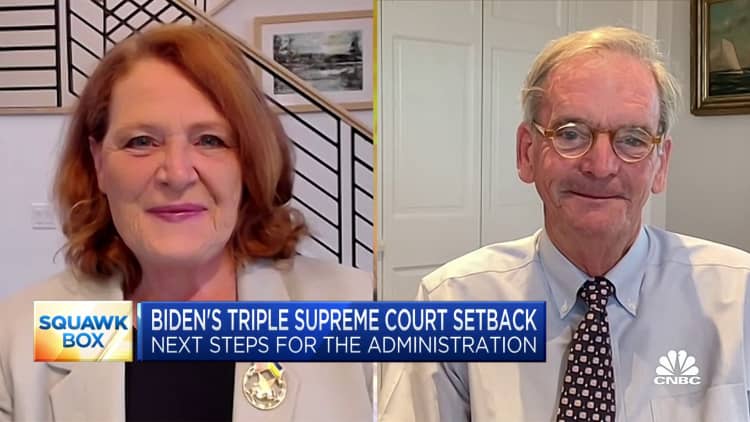Damircudic | E+ | Getty Images
The impending cessation of the temporary pause on student loan payments and interest, which was implemented during the pandemic, brings attention to a significant distinction between two types of debt: subsidized and unsubsidized loans.
One of the primary differences between these federal loans, also known as Stafford Loans, which are intended for higher education expenses, is how interest accrues.
Understanding the Accrual of Interest on Subsidized and Unsubsidized Loans
Direct Subsidized Loans are specifically available to undergraduate students who demonstrate financial need.
These loans do not accumulate interest while the borrower is enrolled in school, either part-time or full-time, or during a six-month grace period after leaving school. Additionally, interest does not accrue during deferment, a period in which payments are postponed due to unemployment or economic hardship.
In these instances, the U.S. Department of Education covers the interest on subsidized loans.
However, this protection is not extended to Direct Unsubsidized Loans, which are available to a wider range of borrowers, including graduate students, and are not based on financial need.
Interest on unsubsidized loans begins to accumulate immediately, and borrowers are responsible for the interest accrued during all periods. This makes unsubsidized loans more expensive than subsidized loans.
In certain cases, such as after a deferment, unpaid interest on unsubsidized loans may be capitalized. This means that the unpaid interest is added to the principal balance of the loan, resulting in future interest payments being calculated based on the higher principal amount, thus increasing the overall cost of the loan.

Borrowers may have a combination of both subsidized and unsubsidized loans, each with different borrowing limits.
According to data from the Education Department, as of March 31, approximately 30.3 million borrowers had subsidized Stafford Loans, with an average balance of $9,800. Additionally, about 30.7 million individuals had unsubsidized loans, with an average balance of approximately $19,000.
(The term Stafford Loan is informally used to refer to both Direct Subsidized Loans and Direct Unsubsidized Loans provided through the Direct Loan Program. It also encompasses subsidized or unsubsidized Federal Stafford Loans provided via the Federal Family Education Loan, or FFEL, program.)
Impact of the Payment Pause and Interest Waiver on Loans
The temporary pause on loan payments and the waiver of interest has been in effect for over three years since the onset of the pandemic in 2020.
During this period, interest did not accumulate on any loans, effectively transforming unsubsidized loans into subsidized debt for certain borrowers.
However, interest will begin accruing on borrowers’ loans again on September 1, and monthly payments will resume in October.
The interest waiver has cost the federal government approximately $5 billion per month.
Some borrowers facing financial difficulties may consider pursuing deferment or forbearance as payments resume. However, according to Mark Kantrowitz, a higher education expert, these options can lead to further financial distress since interest typically accrues during deferment or forbearance. There are exceptions, such as deferment for subsidized loans or for any type of loan during active medical treatment for cancer.
Instead, it is generally more advisable for borrowers to opt for an income-driven repayment plan, which limits monthly payments. This is a better course of action unless the financial hardship is temporary, Kantrowitz suggests.
“In general, if you are capable of repaying the loan, you should avoid using deferment or forbearance,” he said.
Denial of responsibility! VigourTimes is an automatic aggregator of Global media. In each content, the hyperlink to the primary source is specified. All trademarks belong to their rightful owners, and all materials to their authors. For any complaint, please reach us at – [email protected]. We will take necessary action within 24 hours.


